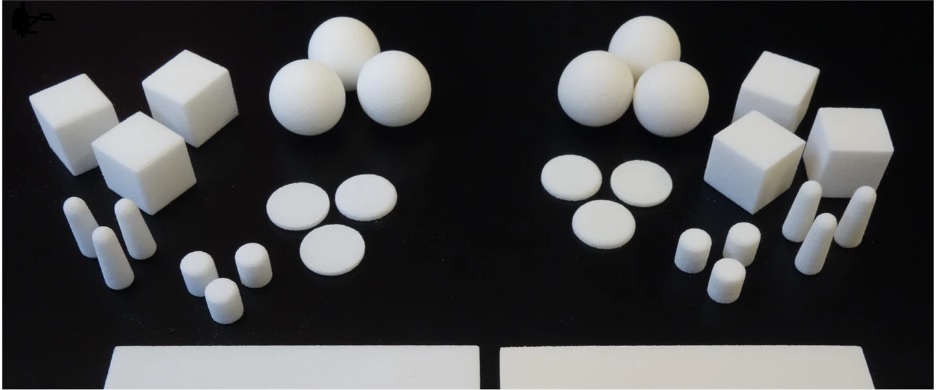Scientists from the University of Sheffield have integrated antibacterial properties into polymer powders to create 3D printed parts capable of fighting infectious diseases.
In a study published in Scientific Reports, silver-based additives were combined with PA 12 and then processed using an EOS Formiga P100 SLS system to additively manufacture antimicrobial components that were not toxic to human cells.
Dr. Candice Majewski from Sheffield’s Centre for Advanced Additive Manufacturing, and lead researcher of this research, stated, “Managing the spread of harmful bacteria, infection and the increasing resistance to antibiotics is a global concern. Introducing antibacterial protection to products and devices at the point of manufacture could be an essential tool in this fight.”
Fights diseases with additive manufacturing
According to the researchers, antimicrobial products are currently available to purchase, with a growing global market for antimicrobial additives due to the desire to improve health. They can be seen to healthcare in implants, prosthetics, splints, and surfaces and devices in clinical settings (such as doors, sinks, instruments, and keyboards).
A selection of 3D printed parts containing and without the antibacterial additive, known as Biocote B65003, into bacterial solutions to test its ability to reduce the number of bacteria after a day. It was found that the parts containing the antibacterial additive were effective against the two main groups of bacteria, Gram-positive (Staphylococcus aureus) and Gram-negative (Pseudomonas aeruginosa). This kind of bacteria is known to cause life-threatening diseases such as pneumonia, meningitis, sepsis, and MRSA.
“The engineering properties of the new composite are indistinguishable from those of the standard polyamide 12 base material,” the study continues. “The material is most effective in nutrient-poor hydrated environments and under these circumstances is able to reduce numbers of planktonic bacteria in its surroundings and numbers of biofilm bacteria attached to the surface.”

Another layer of protection
Following experimentation, the group has deduced that their material could be applicable to intermittently hydrated environments including kitchens, bathrooms and on hospital wards. It can also be seen as another level of protection to coated medical devices, which often are subject to strict cleaning, sterilization procedures, causing human errors.
“Most current 3D printed products don’t have additional functionality. Adding antibacterial properties at the manufacturing stage will provide a step-change in our utilisation of the processes’ capabilities,” added Dr. Majewski. The researchers now plan to conduct field trials to validate laboratory results in real-world settings.
“Use of silver-based additives for the development of antibacterial functionality in Laser Sintered polyamide 12 parts” is co-authored by Robert D. Turner, James R. Wingham, Thomas E. Paterson, Joanna Shepherd, and Candice Majewski.

Subscribe to our 3D Printing Industry newsletter and follow us on Facebook and Twitter for more additive manufacturing news. Also, visit our 3D Printing Jobs board to find out more about opportunities in additive manufacturing.
Featured image shows an X-ray microtomography section of the base material (PA2200), showing pores and an x-Ray microtomography section of the composite showing even distribution of silver phosphate glass particles. Image via the University of Sheffield.


